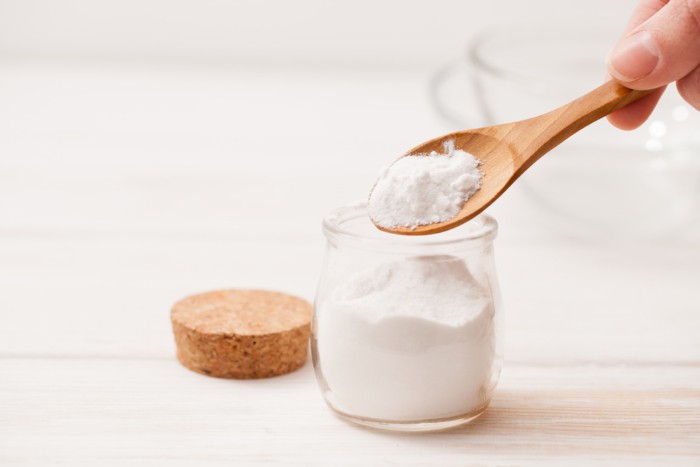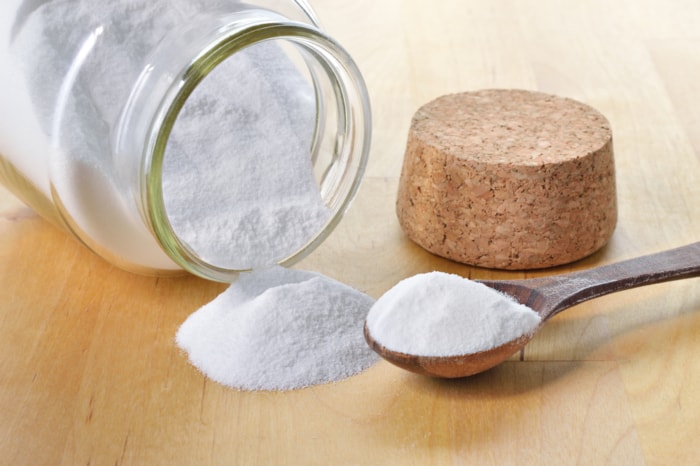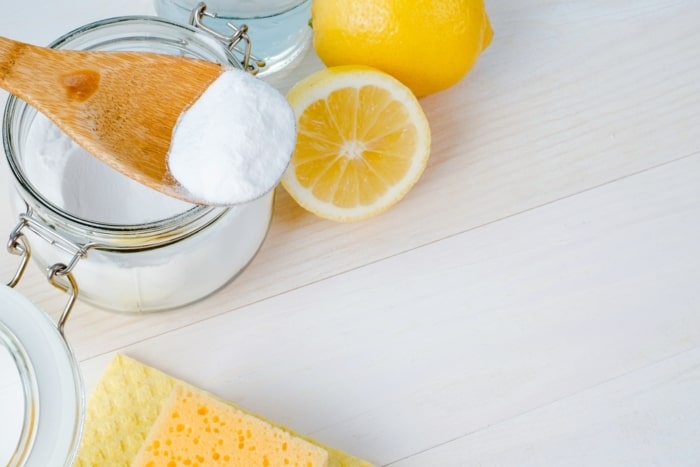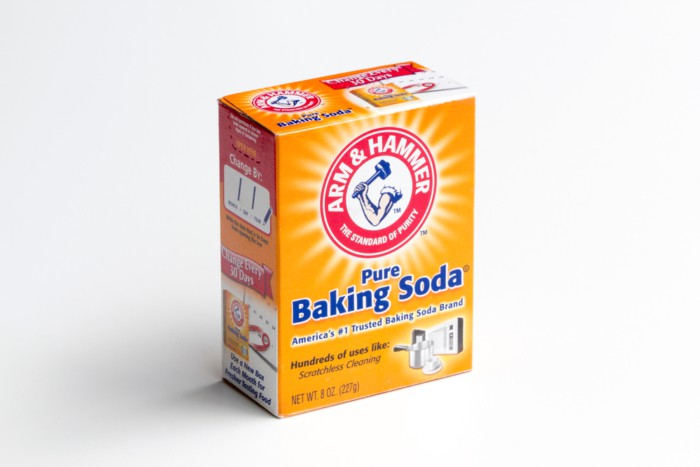Is Baking Soda Gluten Free?
When it comes to gluten free living, every ingredient counts. Many of those who suffer from Celiac Disease, gluten sensitivity, or have opted for a gluten free diet, often inspect every ingredient in cooking and baking. One question that frequently arises is: “Is baking soda gluten free?”

What is Baking Soda?
Baking soda, or sodium bicarbonate, is a leavening agent used in baking. It works by releasing carbon dioxide gas when it reacts with an acid (like buttermilk, yogurt, or vinegar), causing dough and batter to rise.
Is It Gluten Free?
The short and straightforward answer is yes, pure baking soda is gluten free. Sodium bicarbonate is a mineral compound and does not contain proteins, gluten, or grains. This means that baking soda should be safe for those with gluten intolerances or celiac disease.
However, as with many other ingredients, the concern for those avoiding gluten is often not the primary ingredient itself but the potential for cross-contamination.
Check out if Buckwheat is Gluten Free and if Corn Flakes are Gluten Free too.
Cross-contamination Concerns
Cross-contamination can occur if baking soda is processed in facilities that also process wheat or other gluten-containing grains. Tiny particles of these grains could end up in the baking soda, which could be problematic for those with celiac disease or severe gluten sensitivity.
Fortunately, many major brands ensure that their baking soda is produced in dedicated facilities or lines that don’t process gluten-containing items. But it’s always a good practice to read the label or contact the manufacturer if you’re unsure.
Gluten Free Baking Soda Brands
Many brands of baking soda are inherently gluten free because of the nature of the product itself. However, for those with celiac disease or severe gluten sensitivities, it’s essential to choose brands that ensure no cross-contamination during processing.
Here are a few baking soda brands that were known to be gluten free or have gluten free options:
Arm & Hammer: One of the most well-known brands, Arm & Hammer baking soda, is naturally gluten free. However, always check the label and, if needed, contact the company directly if you have concerns about cross-contamination.
Bob’s Red Mill: Known for its range of gluten free products, Bob’s Red Mill offers a baking soda that’s labeled gluten free, ensuring that it’s processed in a way to prevent any cross-contamination.
Frontier Co-op: Offers a variety of natural products, including a baking soda that is gluten free.
Pure Organic Ingredients: They have a baking soda product that’s certified gluten free.
Ener-G: Known for gluten free products, their baking soda substitute is designed specifically for those avoiding gluten.
Always remember that formulations and manufacturing processes can change, so it is a good practice to:
- Read labels every time you shop, even if you’ve bought the product before.
- Look for certification seals from organizations like the Gluten Free Certification Organization (GFCO).
- If in doubt, contact the manufacturer directly to inquire about their processing methods.
The demand for gluten free products has risen over the years, leading many brands to ensure their products meet the needs of this consumer group. Nonetheless, always do your due diligence to ensure the safety of any product you consume, especially if you have food allergies or sensitivities.

How Is Baking Soda Used?
Baking soda, or sodium bicarbonate, is a versatile ingredient that can be used in various applications, from baking to cleaning, and even for personal care. Here’s a dive into the multifaceted uses of baking soda, unveiling its full spectrum of capabilities.
1. Baking and Cooking
Leavening Agent: Baking soda helps dough and batter rise, resulting in fluffy and light baked goods like cakes and cookies.
Neutralizing Acidity: It can neutralize the acidity of ingredients like vinegar and yogurt, balancing the pH levels in various dishes.
2. Cleaning and Deodorizing
Surface Cleaner: Mixed with water, baking soda can clean surfaces, removing stains and marks.
Carpet Cleaner: Sprinkling it on carpets can help remove odors, leaving them refreshed after vacuuming.
Drain Unclogger: Combined with vinegar, it can help unclog drains naturally.
3. Personal Care
Toothpaste: Baking soda is a common ingredient in toothpaste for its ability to remove stains and whiten teeth.
Deodorant: Due to its deodorizing properties, it’s sometimes used as a natural deodorant.
Bath Soak: Adding it to baths can help soothe and soften the skin.
4. Health and Wellness
Antacid: It can act as a natural antacid, helping to relieve heartburn and indigestion.
Insect Bites and Itches: Applying a paste of baking soda and water can help alleviate discomfort from insect bites or itches.
5. Fire Extinguisher
Small Grease Fires: Baking soda can help extinguish small grease fires by releasing carbon dioxide, which helps to smother the fire.
6. Garden Care
Pest Control: It can be used as a natural pesticide, deterring pests like ants and spiders.
Plant Growth: Helps in improving the pH level of acidic soils, benefiting plant growth.
7. Cooking Aid
Tenderizing Meat: When rubbed on meat, it helps in breaking down proteins, making the meat tender.
Vegetable and Fruit Scrub: It can be used to scrub and clean fruits and vegetables.
How to Test if Baking Soda is Still Good
Baking soda is a robust ingredient, but like all things, it doesn’t last forever. Over time, baking soda can lose its potency, and its leavening power might decrease. Here’s a simple way to test if your baking soda is still good and active:
Materials Needed
- Baking soda
- A bowl or a cup
- Vinegar or lemon juice
- Measuring spoons
Steps to Test Baking Soda Freshness
Measure and Add Vinegar or Lemon Juice: In a clean bowl or cup, add a small amount of vinegar or lemon juice. About a tablespoon (15 ml) of the acid will be enough.
Add the Baking Soda: Measure a half teaspoon (2-3 grams) of the baking soda that you want to test, and add it to the bowl or cup containing the vinegar or lemon juice.
Observe the Reaction: Watch for an immediate fizzing and bubbling reaction. An active baking soda will react vigorously, producing a noticeable amount of bubbles and fizz.
Evaluate the Potency: If the reaction is strong and immediate, your baking soda is still fresh and good to use. If the reaction is weak or non-existent, it indicates that the baking soda has lost its potency and should be replaced.
Tips and Considerations
Ensure that the vinegar or lemon juice you use for the test is fresh and not expired.
Conduct the test in a clean environment to ensure that the results are accurate.
Remember, baking soda also has various uses outside of cooking, such as cleaning, so even if it’s not fit for baking, it might still be useful around the house.

Baking Soda Substitute
Baking soda (sodium bicarbonate) plays a crucial role in many recipes, especially in baking, due to its leavening properties. If you find yourself without baking soda, don’t panic. There are several substitutes you can use, depending on the recipe and what you have on hand.
Here are some alternatives:
1. Baking Powder
Baking powder contains baking soda and an acid (typically cream of tartar). It can serve as a direct substitute for baking soda.
Substitution Ratio: For every 1 teaspoon of baking soda, you can use 3 teaspoons of baking powder. However, this can alter the taste slightly due to the added ingredients in baking powder.
2. Potassium Bicarbonate
This is a direct substitute for baking soda without the sodium content. It’s especially useful for those on a sodium-restricted diet.
Substitution Ratio: Use a 1:1 ratio. For every teaspoon of baking soda, use one teaspoon of potassium bicarbonate.
3. Club Soda
Club soda contains bicarbonate of soda, which gives it its fizz. This can help baked goods rise.
Usage: Use club soda as the liquid component in your recipe.
4. Yogurt
The natural acidity in yogurt can react with the baking soda or baking powder in a recipe to produce carbon dioxide and act as a leavening agent.
Substitution Ratio: For every 1 teaspoon of baking soda, use 2 teaspoons of plain yogurt. Remember to reduce the other liquids in your recipe accordingly.
5. Buttermilk
Like yogurt, buttermilk is acidic. It can be used as a substitute in baked goods that require a tangy flavor.
Substitution Ratio: For every 1 teaspoon of baking soda, use 1/2 cup of buttermilk. Make sure to adjust the other liquids in your recipe accordingly.
6. Vinegar
White or apple cider vinegar can react with baking soda to provide the leavening effect.
Substitution Ratio: Use 1 teaspoon of vinegar for every 1/2 teaspoon of baking soda.
7. Lemon Juice
Lemon juice is acidic and can replace baking soda in some recipes.
Substitution Ratio: Use 2 teaspoons of lemon juice for every 1 teaspoon of baking soda.
Things to Remember:
Baking is a science. When substituting for baking soda, you might need to make adjustments to your recipe to ensure the final product’s texture and taste are still up to par.
The substitutes listed can alter the taste, texture, and color of your finished product, so it’s essential to choose the one that fits best with your particular recipe.
If using acidic substitutes like yogurt, buttermilk, vinegar, or lemon juice, remember they need an alkaline component (like baking soda or baking powder) in the recipe to react with and produce the necessary rising effect.

Frequently Asked Questions (FAQs)
Yes, baking soda is gluten free and safe for those with celiac disease. Always check labels for additives.
All baking soda is naturally gluten free, but it is important to choose a brand that is certified gluten free to avoid cross-contamination.
Yes, pure baking soda is gluten free. However, some baking powders may contain gluten, so always check the label.
You May Also Like
- Are Reese’s Gluten Free?
- Gluten Free Tortillas
- Gluten Free Cupcakes
- Is Peanut Butter Gluten Free?
- Are Sprinkles Gluten Free?
- Gluten Free Bread Recipe
If you found this post helpful, I would really appreciate a review! You can find me on Instagram, Facebook, and Pinterest. Join my exclusive Facebook Group for a behind the scenes look. I would love for you to follow along! For more ideas, check out these Dessert Recipes.

